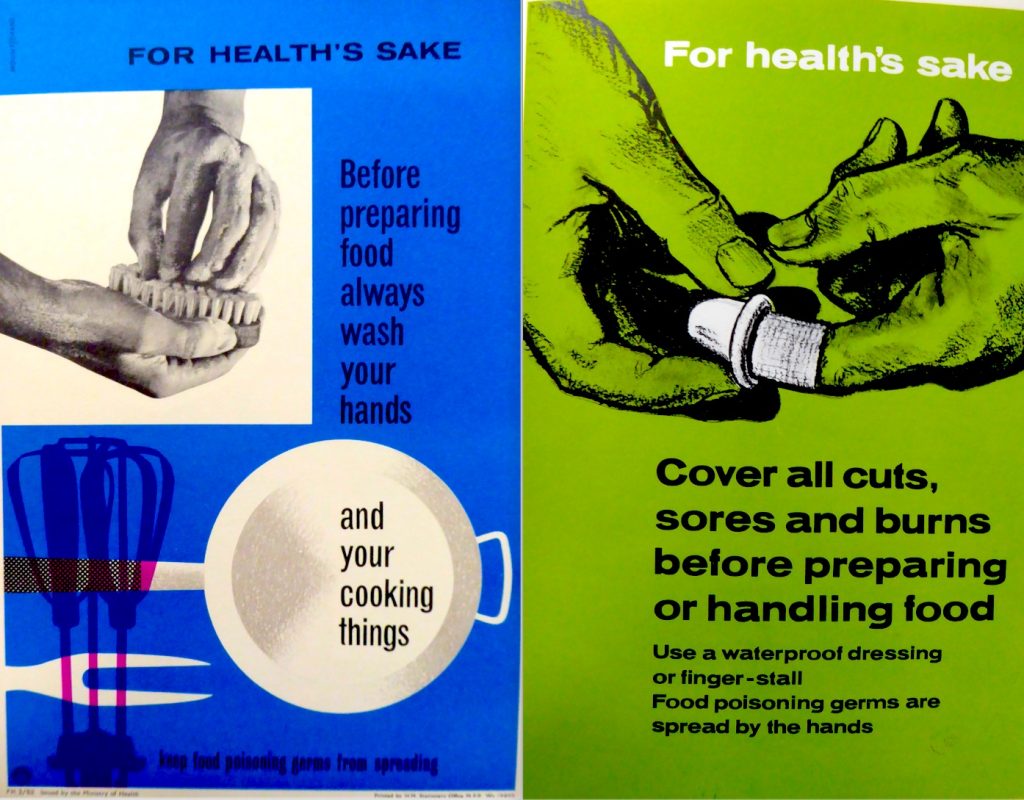Today, as we are staying home, protecting the NHS and saving lives, we at the People’s History of the NHS thought it might be a great time to think about where the NHS can be seen in our homes, and how we experience it during our normal day-to-day lives. This is a topic we have considered before, as in the blog and linked gallery from 23 January 2017 that we are reposting today. Now it’s over to you: looking around your home, can you see traces of our National Health Service? What does it mean to your daily life now, in these Covid times?

In politics, in popular culture, and in historical writing, the NHS is often discussed and represented principally through the hospital. High-cost hospital care, over-stressed accident and emergency units, limits on access to hospital-based technologies or pharmaceuticals: these are the subjects most likely to hit the headlines and spark contentious debates. In part this is because hospitals have, since the early twentieth century, come to symbolise medical modernity. They are where the ‘medical miracles’ happen — and equally, where medical ‘tragedies’ most often come to their dramatic conclusions. And of course, hospital care and hospital-based treatments also absorb by far the majority of the NHS budget (according to the Nuffield Trust, hospital care absorbed some 76% of the NHS budget in 2010/11, and its costs were then rising by about 5% a year).
But most NHS health care – something like 90% of it – takes place beyond the hospital, in GP surgeries, pharmacies, dentists’ offices, ophthalmic services, physio suites, public health settings, and especially in our own homes. Think about it: where do you take (or forget) your medicines; struggle through your physiotherapy exercises; read your health information leaflets; receive calls to preventive medical screening (and decide whether or not to partake in it); monitor your physical health and well-being; maintain and support other family members; restore your mental health? Chances are, you do all these things in and around the place where you live – in your home.
So can we SEE the NHS in our houses? If it does have a presence, what does that mean to us and about the NHS? To start the new year, I asked the People’s History of the NHS team to look around their own homes for traces of the National Health Service. As a group of young adult to middle aged and reasonably healthy people, we were not entirely sure what to expect: would we just find stacks of history books, or would there be evidence of deeper, broader, and more diverse NHS influences on our lives?
You can see the results of our rummaging in the gallery here, with some of our thoughts about what we found. From anniversary coins to abandoned crutches, prescription packets to a blizzard of paperwork (and yes, plenty of books!), it turns out that the NHS has left its mark all over our houses – even if its presence is often so boringly normal that we never noticed it before.
Some of the items we turned up were explicitly meaningful: I treasure my NHS card; another researcher, her childhood NHS specs. The transfer of vaccination certificates and medical cards from parent to child was a part of the transition to independent adulthood in another family, and the cards themselves have consequently survived house moves and spring cleaning culls ever since. Other NHS items probably fall into the ‘clutter’ category (a charity bookmark; a medical gadget; disused crutches). Still others explicitly represent what the NHS means to us not as researchers, but as individuals and citizens: a Bevan tea towel and ‘Born in the NHS’ mug. And finally, of course, there are the traces left by the NHS in its everyday efforts to save and improve our lives: the medications that keep us ticking over.
So now we are asking you again: is the NHS in your house? If it is, send (or tweet) us your selfies, pictures of your stuff, or stories about the stuff that has gone missing over the years. And do tell us what it means to you to find the NHS in your home! The virtual museum of the NHS is now collecting for the NHS in Covid times…
Roberta Bivins
Should you wish to remove a comment you have made, please contact us



Love this! I have a lot of new baby public health things – like the Red Book – which in the old normal would have been all filled out by health visitors etc, but which under Covid remain empty because of cancelled home visits. I also had for months some half-finished antibiotics which I was prescribed in the midst of the pandemic for something, and then I was switched prescription. I would normally go to the pharmacy immediately to dispose of the old ones safely but think I had something in my psyche about keeping antibiotics as they may be useful for someone given medical shortages in pandemic and with Brexit, and also I had fear about going to a pharmacy as a crowded ‘high-risk’ space. So really for me I think the pandemic has meant that innocuous medical objects in my home symbolise a background level of anxiety and concern, for myself, for the NHS itself, and for other people who need its care. They also show how the rhetoric about protecting the NHS has weaved in to my mind, and made me feel very responsible for my own health and care, perhaps.